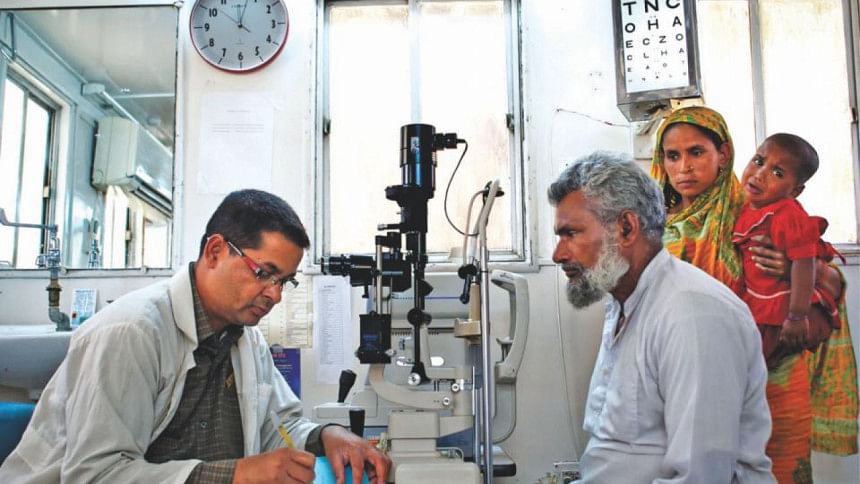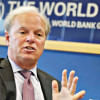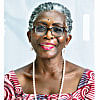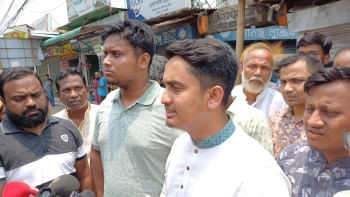Middle-income Bangladesh has to be a healthy Bangladesh

Economic progress is meaningless if the people are not healthy enough to enjoy the progress. As Bangladesh pursues its dream of becoming a middle-income country, this dream must also be one of a Healthy Bangladesh.
Not just in Bangladesh—across the world health is graduating from being only a sectoral to a strategic agenda. Four reasons stand out. Stresses of modern living, shrinking open spaces and poor lifestyle choices are leading to a quantum jump in the incidence of non-communicable diseases such as cancer, diabetes, respiratory diseases and heart ailments. Unplanned urbanisation is producing unprecedented levels of air and water pollution as well as elevating injuries and accident fatalities into a 21st-century epidemic. Climate change is raising the spectre of new pandemic risks. Galloping healthcare costs have become entrenched sources of economic shocks, not only for the poor but also the middle classes. All these together have transformed health into a strategic agenda of our times; not just healthcare, but healthy living itself.
Health is a poverty driver if unaddressed and can also be a growth driver if addressed holistically. The stakes thus have gone beyond the confines of the health sector only. The world, including Bangladesh, observed December 12 as UHC (Universal Health Coverage) Day. The time is appropriate to galvanise a national discussion and mobilise a cross-section of stakeholders at the national and local levels on translating UHC awareness into a sustainable action agenda. Many initiatives are already underway. The government has adopted a new UHC-focused Health, Nutrition and Population Sector Program (HNPSP). There are also multiple initiatives by NGOs, community-level actors, the private sector and others. A new civic platform branded as "Healthy Bangladesh" was also launched on May 13 this year. But the reality is that the sum is yet to be greater than the parts.
Budgetary allocations on health remain limited to around three percent of GDP. Sixty-seven percent of health expenditures are privately incurred—meaning out-of-pocket (OOP)—putting not only the poor but also many middle class families in serious financial risk. Urban health, particularly for the urban poor, continues to be a glaring gap in the health infrastructure. The referral system is largely non-functional putting enormous strain on the tertiary hospitals as can be seen in the chaotic over-crowding of patients in the wards and hospital floors. Awareness and more importantly the practice of healthy lifestyles are agendas yet to take off in any comprehensive manner. The social and environmental determinants of health too pose enormous challenges—urban sanitation, air and water pollution, unsafe foods, to name the most critical ones.
Bangladesh, to its credit, has many success stories when it comes to the health sector—particularly notable are the achievements in reduction in child and maternal mortality, increased life expectancy, near-eradication of open defecation, a pluralistic healthcare delivery system, growth of a domestic pharmaceutical industry, and policy visibility on selected agendas such as disability. However, as the country's economy marches ahead, the health sector challenges are also shifting towards curative care and non-communicable diseases. The issues that currently demand priority attention include efficiency of healthcare delivery, quality of medical education, healthcare costs and sustainable financing of healthcare.
But who will deliver these outcomes, or to put it differently, what are the sustainable paths to realising the goals of accessible, affordable and quality healthcare and of the larger goal of Healthy Bangladesh? The health minister was very candid during the launching event of the Healthy Bangladesh platform earlier this year. He said that progress on many reform measures remains stalled due to lack of consensus amongst health professionals and due to entrenched bureaucratic hurdles. The challenge thus is not only of paper policies but of system-strengthening on the ground as well as mobilising and empowering the drivers that can create a momentum for change.
The recent experiences of district-level dialogues implemented by the Power and Participation Research Centre (PPRC) as the secretariat of the Healthy Bangladesh platform with support from the Health, Finance and Governance project of USAID have thrown up several interesting areas where UHC can be elevated to a game-changing social agenda. Dialogues held so far include those in Bera in Pabna, Jhenaidah, Nilphamari, Satkhira and Sylhet and these have brought forth at least three potential agendas that stand to energise the UHC agenda.
A crucial entry point emerging from these grassroots dialogues is the enormous potential of a focus on school health. A stark reality we discovered during these grassroots experiences was that during menstruation, many girls avoided going to schools due to the absence of women-friendly toilets. Danger of urinary tract infection is widespread due to the same reason. This is but one issue pertaining to school health. But whether it is boys or girls, there are two game-changing agendas related to school health. One is about health awareness—cleanliness, food habits, healthcare-seeking, etc. The other is about regular screening of students for early detection of birth defects, NCDs and other health risks. In truth, the government has a programme called school health, but like many others this is also mere words on paper than a reality. The challenge here is not of a paper policy but of a practical arrangement on the ground between schools and health professionals that is stewarded by platforms such as Healthy Bangladesh in partnership with urban and rural local governments.
A second under-addressed but vital agenda is the issue of hospital management. For want of good management, many hospitals present an unclean and chaotic environment that severely detracts from the goals of accessible, affordable and quality healthcare. The government's policy thinking has not prioritised this issue but on the ground we have seen the positive outcomes which can flow when this has been adopted as a priority by the relevant local actors. Pourashavas and city corporations can play a critical supportive role in this regard when the health professionals take a lead and prioritise the issue. We saw firsthand the positive outcomes in terms of cleanliness and patient satisfaction during the visits to the Jhenaidah Sadar hospital and Sylhet Osmani Medical College. Such management initiatives can also ensure adequate doctors' time for the patients when the hospital prohibits the entry of over-zealous medical representatives "pushing" their brands with lucrative "incentives" to the doctors during official hours. Unethical pharma promotional activities lie at the root of many problems including over-prescription and monopolising of doctors' time.
A third priority agenda indicated by the grassroots dialogues was the multi-dimensional significance of progress on urban sanitation. This is as much a health agenda as it is an urban agenda. Unclean kitchen markets drive unsafe foods. Poor garbage management is at the heart of the poor quality of urban environment and high levels of pollution, with the poor being the worst victims. We are happy to flush but give so little thought to where the waste eventually goes. The reality is nothing short of alarming.
There are certainly many other agendas towards the goal of Healthy Bangladesh. The imperative today is not to see this merely as a policy option but as an essential dimension of our middle-income dream. Even more importantly, the challenge is one of a game-changing engagement on the ground. Accessible, affordable and quality healthcare, cleanliness, nutrition and fitness—the Healthy Bangladesh platform invites everyone to engage on these paths that will make our middle-income aspiration a truly meaningful one.
Hossain Zillur Rahman is the executive chairman of Power and Participation Research Centre (PPRC) and the convener of Healthy Bangladesh.










Comments